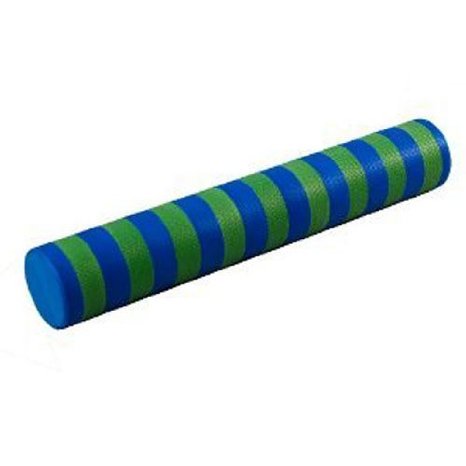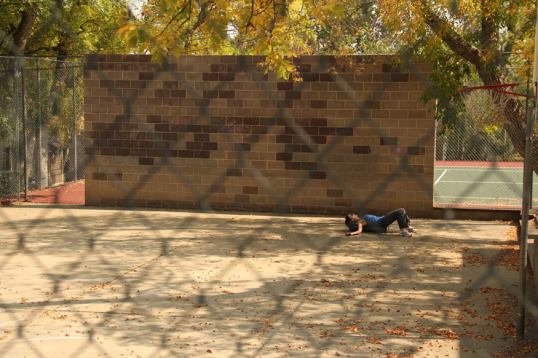I have a love/hate relationship with things (but who doesn’t?!). I gave up the majority of my belongings to move into our 10-foot home. Spenser did too, but let’s be honest- he had way less crap to begin with! Not that it made it made it any easier. Back on topic-
Even though we’ve purged most of the extra weight, there are still material objects we can’t live without. They just have to fit in a 10×7 box!
THE FOAM ROLLER

Mine is plain black, but you can color-coordinate if you’re into that sorta thing. Also known as ‘the log roller’ (coined by Miss Rachel Belschner). Rachel & I foam rolled nearly every day in Squamish. No, it wasn’t that weird foam rolling next to someone else! It’s nice to have the company, you just have to accept the occasional grunt/groan.
I hope most of you know what this is. If you don’t, you will likely benefit from making it’s acquaintance. This is my single favorite piece of physical therapy equipment out there. I’ll need it because of what climbing does to my body. That sounded too dramatic. Let’s try again. The foam roller is the best at getting out my post-climbing kinks and tightness. A consistent foam roller and yoga/stretching routine were my main shoulder saviors when getting back into climbing this summer (post finger pulley popping), so I guess I’m in a bind of sorts. If I want to continue to climb (and I do)- I gotta keep it up.

This is me in Chautauqua Park in Boulder, CO last year. My shoulder was feeling much worse back then- thank you, foam roller! If you want to read more about my physical therapy routine that helped rid me of shoulder pain (including foam roller stretches), here’s the link to the old post.
If you try it (smart), you have to stay with it for a while. And you have to do it consistently. Even if you just do short sessions, you’ll start to learn how to reach the kinks and then you’ll never want to stop foam rolling. Seriously.
For climbers, it’s the perfect tool for stretching out our tight chests and backs. Including battling the notorious climbers’ hunch (y’all know what I’m talking about and you don’t want it!). We all want to climb like apes, but not look like them. Not to mention, muscle tightness is a top reason climbers pull or tear ligaments and tendons. Don’t wait until you’re injured to start! Here’s a good article on how to use one and why it works.

I’ve been trying to get Katie from The Morning Fresh to foam roll since I met her. I finally got her on it a few weeks ago! She had a raucous good time. There’s really no right or wrong way of doing it…but I’m happy to answer any questions about it, just ask below! 🙂
My foam roller is made by J-fit, you can get it on Amazon for less than $30. You can also find similar ones at sports/outdoor shops and discount stores like Marshall’s or Ross. I prefer a full-length foam roller (36-inch) so that I can fit my the entire length of my spine on it. I also like the J-fit one specifically because its high-density foam makes it a sturdy work horse. It has lasted me over a year in all-terrain conditions and is still going strong!
UPDATE: recently came across at New York Times article on research behind foam rolling, it’s a good read. Also, there are now classes in foam rolling. Not sure how I feel about this.

Me getting my roll on. This is a good back release, especially for climber’s battling the dreaded climber’s hunch. I love the feeling of my spine “straightening” out as I roll along it. The feeling is addicting.

ADDICTED to mine. I also got a suggestion on using lacrosse balls to massage out little knots – haven’t tried yet, but might be worth it for something that takes up so little space!
Absolutely! The lacrosse ball is very magical, and not to be underestimated! 🙂
MELT balls are mine for hands and feet (http://www.meltmethod.com/). Way less about grinding into knots and much more about reviving dehydrated connective tissue (i.e. fascia, tendons, etc…) which also releases the muscles. They’ve found that the fascia is more innervated (has more nerves) than muscles, and often it is where restriction and pain originate. The MELT roller is so soft you can bend it to touch the ends together. All of it is meant to mimic hands on therapy that you can do to yourself.
That said, my husband, Aaron, and I have three rollers in diff densities and lengths, and all kind of balls in diff sizes and densities, too. Including the Armaid (http://armaid.com/). I swear using this stuff is like roller porn!! <3 'em and saved my husband and I from climbing pain, injuries and too much time off from climbing!
So many good options for physical therapy, so little time! 😉 How do you find the MELT balls in comparison to lacrosse balls? I would love to hear more about how you choose which density of foam roller you go with pending on the ache/pain!
The Armaid is incredible! I had heard rumors, but finally got to try one out a few weeks ago. If we had the space, I think it would be a worthwhile purchase (if not for the pure ecstasy alone)! Have you heard about it helping with elbow tendonitis issues?
Hi Vikki!
In general I’m moving more and more away from hard foam rollers and intense, hard, painful balls like lacrosse or golf, unless I can easily control the amount of pressure I put on them. i.e. I wouldn’t use a lacrosse ball sitting on it under my glutes…
So for me, the hard balls or rollers are more for pressure points/trigger points, like the palms of my hands, the soles of my feet, or even a specific spot in the back of the armpit/shoulder, under the piriformis (outer hip/glute area), at the occiput (base of the skull) or on the outer forearm. Sometimes I leave the ball/roller where it is and press down on it in the one spot, then move to another spot. With the forearm I’ll keep the ball/roller on the same point and open and close my fist and then roll my wrist in circles or wave my hand to get movement under the ball/roller. Same with back of my skull; I keep the roller where it is under my neck at the base of my skull, turn my head to the side then make small circles with my head to rub that one spot…
When I roll along the length of a muscle (as opposed to a specific spot), I usually use the softer to medium density balls and target the fascia and connective tissue. In that case, the idea is to get the tendons and muscles to be gliding on each other. When they get stiff or injured they tend not to do that and then friction and pain ensue. (watch this video to see it on a cadaver! http://www.youtube.com/watch?v=_FtSP-tkSug) You def want soft balls and rollers for that because it isn’t really the muscles or knots in them you are targeting, and the connective tissue needs very little pressure and is much more sensitive/intelligent. It’s like a full-body wet suit that covers your entire body. You can open up the connective tissue in your feet and get relief in your low back or even have a pop of release in your neck! (check out the maps of connectivity here: http://www.anatomytrains.com/at/)
All that said, yoga is my industry — I teach for a living — and I am constantly stretching out my muscles and realigning my bones with my yoga practice. The balls and rollers are supplemental to that. So, how this works for someone who doesn’t stretch/practice and doesn’t have a sense good of alignment/posture may really vary the results. You can check out my yoga blog here if you want: http://paisleyanne.com/blog/
As for Armaid, I’ve used it more on a preventitive level. When I overdo it and my elbows hurt, or keep me up at night aching, it does seem to help a ton. But I don’t actually have full-blown problems. My husband did, but it was before we got the Armaid. He resolved it with first a medium density roller and then a firmer one as his arms loosened up. He rolls all around his forearms and triceps several nights a week, or daily if he’s feeling it more.
Happy Rolling!
Thanks for the thorough report, this is incredibly interesting to me! Only in the past couple years have I been aware of how connected our body is (and how massage in your feet or buttox can bring relief in your neck. THE FUZZ!!! What a great video! I’ve just gone onto his Facebook page/website to check out more. Thank you for the introduction to Gil Hedley! I think this calls for another blog post 🙂 I’ve also never come across an actual map of connectivity- Anatomy Trains is very cool, looking forward to checking it out more. I really enjoy your blog! I feel like I owe a lot to yoga and I especially owe it to myself to do it right, your blog is very helpful for me while being on the road and not being able to study with a teacher. Do you also climb? Sometimes I wish I wasn’t in love with the sport so much, still learning (clearly!) how to make climbing work with my body, instead of against it.
Foam roll all day son!
All day, err’day!
Definitely agree this is a must have. My other two would be a Theracane and an Armaid. Then you can sit around and just do body maintenance all day long!
Haha, seriously! Seems like the more active you are, the more you have to maintain… Or at least it sure feels like that. We’ve got a Back Buddy AKA Theracane’s big brother and I was thoroughly considering giving it a blog post of it’s own! And I certainly wouldn’t mind Santa dropping off an Armaid this year…
Foam rolling is a good idea, but commercial foam rollers are stupid. A section of PVC piping, say 4in diameter and 2ft long, combined with some rubberized paint is cheaper than most foam rollers, will never wear out, and is much firmer, which is a good thing after you get used to it.
Not a bad idea Matt, I can get down on some DIY. Thanks for the tip. Not sure I agree that the commercial ones are stupid. Do you have a homemade example we can see?